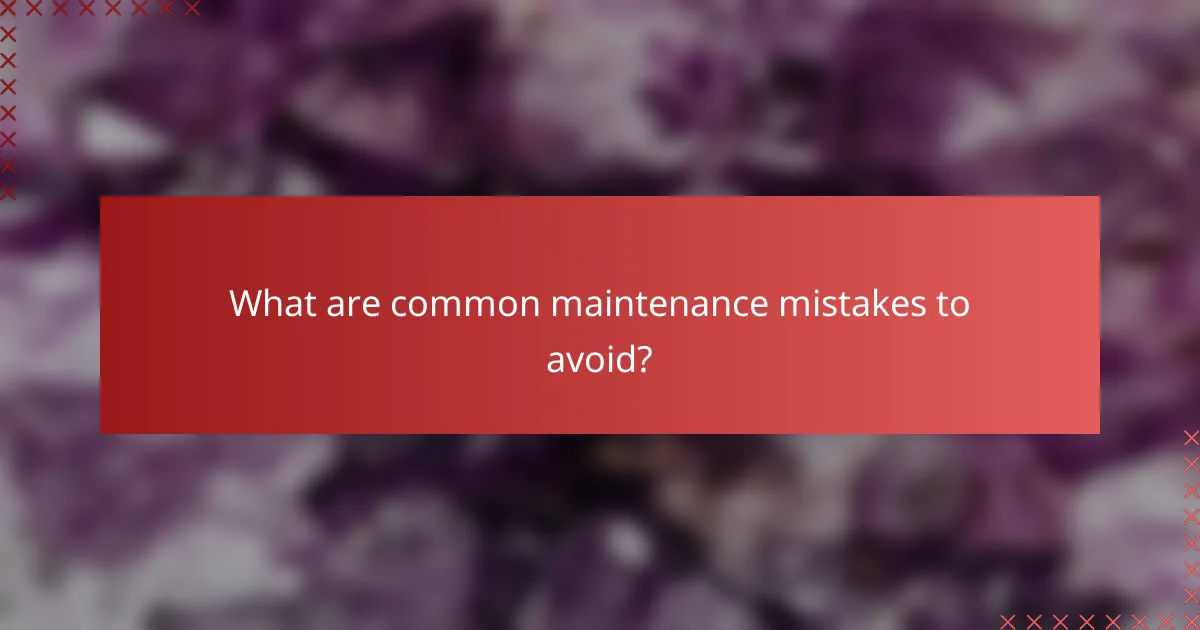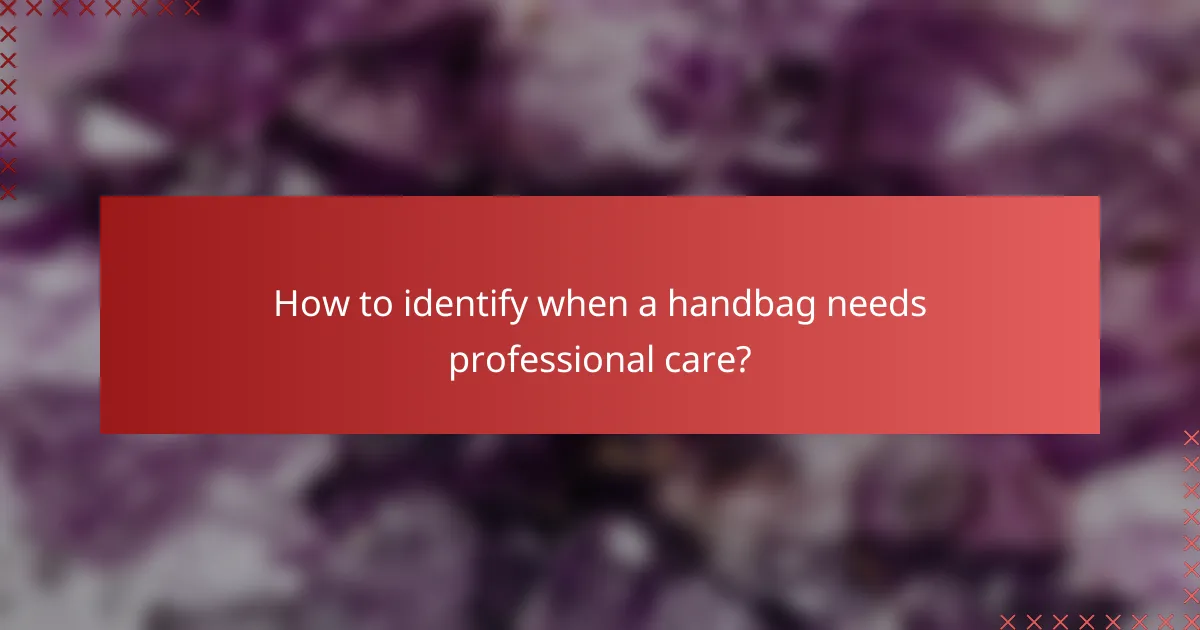Maintaining your designer handbags through seasonal care is crucial for preserving their beauty and extending their lifespan. Regular cleaning and proper storage techniques can prevent dirt buildup and protect against environmental factors. By implementing these maintenance tips, you can ensure your luxury bags remain in pristine condition for years to come.

How to Clean Designer Handbags Seasonally?
Cleaning designer handbags seasonally is essential to maintain their appearance and longevity. Regular maintenance helps prevent dirt buildup and keeps materials in good condition.
Use a soft cloth for surface cleaning
To clean the surface of your handbag, start with a soft, lint-free cloth. Gently wipe down the exterior to remove dust and light stains, being careful not to rub too hard, which could damage the material.
For leather bags, a damp cloth can help lift stubborn dirt without causing harm. Always test on a small, inconspicuous area first to ensure no discoloration occurs.
Apply leather conditioner for leather bags
Leather handbags require special care to keep them supple and prevent cracking. After cleaning, apply a high-quality leather conditioner to nourish the material and maintain its luster.
Use the conditioner sparingly, following the manufacturer’s instructions, typically every few months. This will help protect against moisture and environmental damage.
Use specialized cleaners for fabric handbags
Fabric handbags need specific cleaning products to avoid damaging the fibers. Look for cleaners designed for the specific fabric type, such as canvas or nylon, and follow the application guidelines closely.
Spot cleaning is often effective for minor stains. For deeper cleaning, consider using a fabric-safe spray or foam cleaner, but always test on a hidden area first.
Store in dust bags to prevent dust accumulation
When not in use, store your designer handbags in their original dust bags. This prevents dust accumulation and protects the bag from scratches and fading due to exposure to light.
Ensure the bags are completely dry before storing them to avoid mildew. Avoid overcrowding in storage to maintain their shape and structure.

What are the best storage practices for designer handbags?
The best storage practices for designer handbags involve keeping them in optimal conditions to maintain their quality and shape. Proper storage can prevent damage from environmental factors and prolong the life of your investment.
Keep in a cool, dry place away from sunlight
Storing your designer handbags in a cool, dry environment is essential to prevent moisture and heat damage. Ideal temperatures are typically between 15-25°C (59-77°F), and humidity levels should be kept low to avoid mold growth.
Direct sunlight can fade colors and degrade materials over time. Use a dust bag or box to shield your handbag from light exposure when not in use.
Use handbag inserts to maintain shape
Handbag inserts are a practical solution to help maintain the shape of your designer bags. These inserts can provide structure and prevent sagging, especially for softer materials.
Choose inserts made from breathable materials to allow airflow and avoid moisture buildup. This simple addition can significantly enhance the longevity of your handbag’s appearance.
Avoid stacking to prevent deformation
Stacking handbags can lead to deformation and creasing, particularly for more delicate designs. Instead, store each handbag separately to maintain its original shape.
If space is limited, consider using shelf dividers or dedicated storage boxes to keep bags upright and prevent them from being crushed. This practice will help preserve the integrity of the handbag’s structure over time.

How to protect designer handbags from seasonal elements?
To protect designer handbags from seasonal elements, it’s essential to use appropriate care techniques that shield them from moisture, dust, and temperature fluctuations. Implementing these strategies can extend the life and appearance of your luxury bags.
Use water-repellent sprays for fabric bags
Applying water-repellent sprays designed for fabric can significantly enhance the durability of your designer handbags. These sprays create a protective barrier that repels moisture and stains, making them ideal for rainy or snowy conditions.
Choose a spray that is specifically formulated for the material of your bag, and always test it on a small, inconspicuous area first. Reapply the spray periodically, especially before the start of a wet season, to maintain its effectiveness.
Store in breathable dust bags during off-seasons
When not in use, store your designer handbags in breathable dust bags to protect them from dust and environmental pollutants. This practice prevents moisture buildup and allows air circulation, which is crucial for maintaining the integrity of the materials.
Avoid using plastic bags, as they can trap moisture and lead to mold or mildew. Instead, opt for cotton or linen dust bags that provide a protective yet breathable environment for your handbags during off-seasons.
Keep away from extreme temperatures
Extreme temperatures can damage the materials of designer handbags, causing leather to crack or fabric to fade. Store your bags in a climate-controlled environment, ideally at room temperature, away from direct sunlight and heat sources.
Avoid leaving your handbags in cars or attics, where temperatures can fluctuate dramatically. Keeping them in a stable environment helps preserve their shape and color, ensuring they remain in excellent condition for years to come.

What are common maintenance mistakes to avoid?
Common maintenance mistakes can significantly shorten the lifespan of designer handbags. Avoiding these pitfalls ensures your investment remains in excellent condition for years to come.
Using harsh chemicals that damage materials
Harsh chemicals can strip the natural oils from leather and other materials, leading to cracks and discoloration. Always opt for pH-balanced cleaners specifically designed for handbags.
Before applying any product, test it on a hidden area to check for adverse reactions. Using gentle, natural solutions like mild soap and water can often suffice for routine cleaning.
Ignoring minor scratches and scuffs
Minor scratches and scuffs may seem insignificant, but neglecting them can lead to more extensive damage over time. Addressing these issues promptly helps maintain the handbag’s aesthetic and value.
Use a soft cloth to buff out light scratches, and consider applying a leather conditioner to restore moisture. For deeper scuffs, consult a professional for repair options to prevent further deterioration.
Overloading bags which can cause wear
Overloading your handbag can strain its seams and structure, leading to premature wear. Be mindful of the weight you carry and avoid exceeding the bag’s intended capacity.
A good rule of thumb is to limit the contents to essentials, keeping the bag light and manageable. Regularly check for signs of stress, such as stretching or tearing, and adjust your packing habits accordingly.

How to identify when a handbag needs professional care?
A handbag typically needs professional care when you notice significant wear, damage, or changes in its appearance that regular cleaning cannot address. Key indicators include visible wear on straps, changes in shape, and persistent stains that do not come out with standard cleaning methods.
Visible wear and tear on handles and straps
Visible wear and tear on handles and straps is a clear sign that a handbag requires professional attention. Look for fraying, cracking, or discoloration, which can indicate that the materials are degrading. If the handles feel loose or the straps are beginning to detach, it’s time to seek repair services.
Regularly inspect these areas, especially if you frequently carry heavy items. A good rule of thumb is to check your handbag every few months for signs of wear, especially after seasonal use. If you notice significant damage, consider taking it to a specialist who can restore the integrity and appearance of your handbag.
